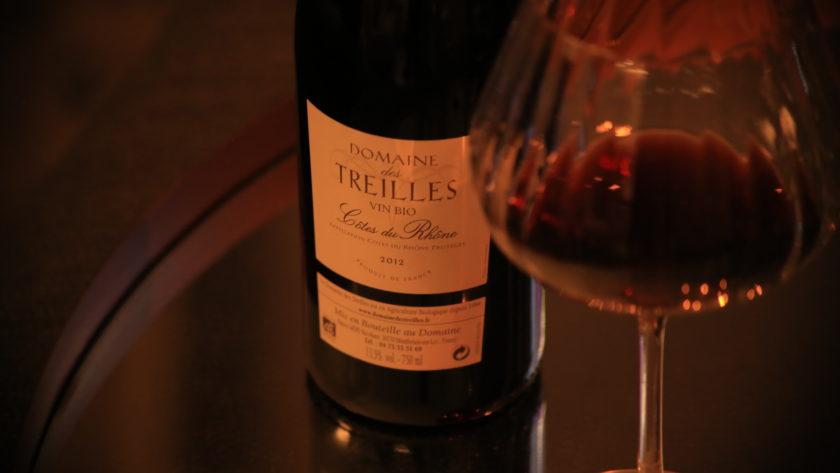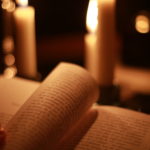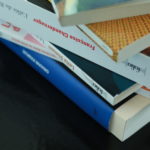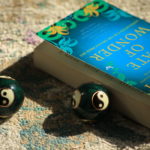Close your eyes and listen.
Now tell me, what does the music smell like ?
In 1708, Giovanni Maria wrote to his brother : “I have discovered a scent that reminds me of a spring morning in Italy, of mountain narcissus, orange blossom just after the rain. It gives me great refreshment, strengthens my senses and imagination”.
It was the beginning of what we know today as Eau de cologne. There are many stories about the light and refreshing perfumed water from Cologne. But the one that spoke to me the most was that of Giovanni Maria Farina, and his Farina 1709. I keep my miniature bought in Köln as a precious reminder, that something that is volatile, can be powerful enough to create a different sensation every time someone smells it, and that, for more than 300 years. In my imagination, this was Chopin’s perfume. Rainy but floral, with a subtle depth of sandalwood and olibanum, an elegant and never obtrusive scent of piano…
I make myself confortable and get ready to enjoy the book. It’s so short that every moment needs to be appreciated. When it comes to the interpretations of Chopin, I cannot resist the pleasure of recommending the recordings of Maria-João Pires. One of my favourite pianists, she feels Chopin’s music with so much grace that it almost feels like a meditation. Look for her, listen to her, and get closer to music.
One of the phrases in the book got my attention in a very visual way : “Bach proposes crayon sketches that you can colour yourself. But not Chopin. His technique is more like watercolor. Everything blends in a unique way and the blurr of the harmonic contours looks like drops of water mixing their hues.”
I am very fortunate to have an exceptionnally talented watercolorist to call my dearest friend. She tought me to appreciate the subtlety and character of watercolor, its infinite elegance distilling itself from water and pigment. So maybe you wish to try playing with a brush, or simply appreciate great artists of this mastery, whichever you choose, know that it will work wonders with some Chopin in the background.
Everything I choose to speak about on this channel is in the spirit of balance. It will come as no surprise that while I wish to speak of good wine today, it is with an intention of awakening our senses and not numbing them. So if you choose to do so, drink responsibly.
Eric-Emmanuel Schmitt is born on the outskirts of Lyon, the region of the Rhône Valley, and it just so happens to be my favourite wine region in France. Now, I have to admit that navigating the French wine culture is not an easy task, as the categories are strongly connected to the region, the sun exposition that the vineyard gets and the name of the terroir. I personally feel more confortable talking about types of grapes, as that gives me a better idea of what I’ll drink even before opening the bottle. And if you choose to take this road, it’s easier to understand a wine region. For example, a red Côte du Rhône will definetly have these three types of grapes in some proportion : Grenache, Syrah and Mourvèdre. The Grenache has almost no tannins and is not acidic, while the other two can develop a bit of both, balancing the whole. The notes will take you towards berries and black pepper, maybe licorice and spices if you have more Syrah, and when they age, they develop a light leathery undertone.
This particular bottle comes from a domaine that produces family wine since 1772. It’s fascinating how in a few drops of red nectar, you find centuries of history, the sun, the soil, the rain, and all the stories they imagined together.
We’ll end on a sweet note, that I’m hard-pressed to connect with the book. It’s just one of those unexplainable mind connections, like saying that something tastes blue. Apple pies must be one of the most common desserts around the globe. I cannot decide on a favourite, but this version coming from Normandy is definetly in my top 3.
30 or so minutes in the oven and you have a Tarte aux pommes normande, or Normandy apple pie, that smells just like Chopin’s music. Soothing, delicious, envelopping you in an invisible embrace.
Full recipe in the Recipes Menu.
I had a wonderful time reading Madame Pylinska and the secret of Chopin. The book itself is a jewel, and all that it inspired made me create an afternoon of well-being. I hope you will give it a try, maybe even in French, but we’ll talk about reading in foreign languages some other time…
Until then, enjoy your reading and your rituals !




